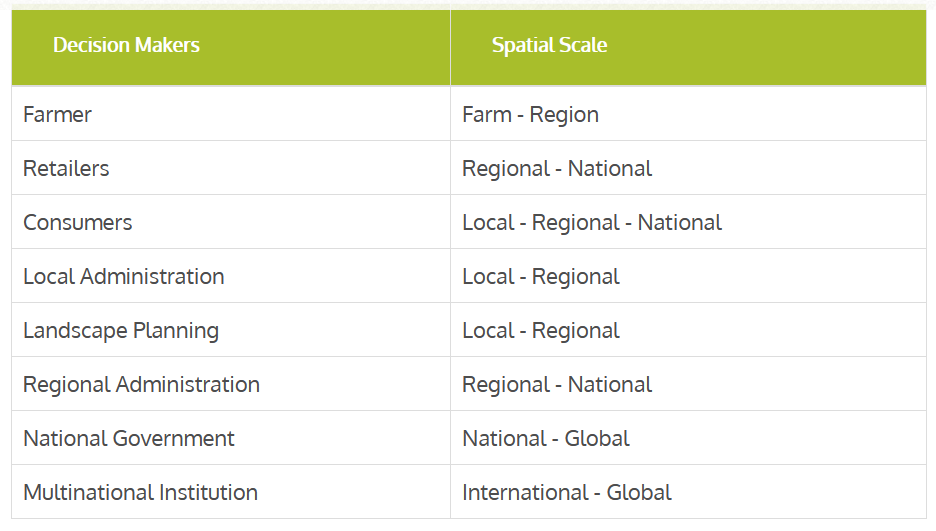Impact Assessment
Impact Assessment

At the start of an assessment, the assessments purpose must be defined in order to properly select the topic, set the system boundaries and choose impact areas and indicators. If the purpose is purely scientific with no practical application intended, these variables are all determined by the specific research question. However, if the assessment is intended to inform decision makers, it is useful to align its topic with the so called decision making levels, i.e. the scales at which the intended groups operate and at which different options are available to them.
Agricultural management for any given site is influenced by the decisions of multiple actors. These are farmers, but also retailers, consumers, administration and policy makers. For these groups, assessments are particularly useful if they compare impacts of different options available them, thus facilitating informed choices. An assessment for farmers, for example, could compare the impacts of different systems for slurry application while an assessment for consumers could analyse the impacts of different dietary choices. Focussing on specific actor groups sets the spatial frame with regard to the assessments topic, i.e. defines the scale at which options are analysed (see Table below). The assessment of impacts, however, should not be restricted to this scale and relevant effects that occur on another scale must not be ignored. For example, an impact assessment of farmers’ options for increasing soil carbon sequestration will analyse effects of different management at the local scale, but also assesses climatic impacts at the global scale.
Below we present a selection of decision makers that influence agricultural soil management and provide an overview of the spatial scales they operate on.

Table 1: Decision makers that influence agricultural soil management and the spatial scales at which they mainly operate.